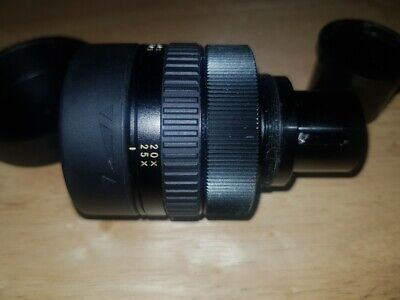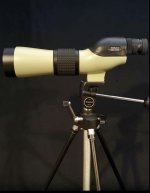Earnest lad,
To add to the confusion, please understand that jring is using WF generally to mean "wide-field" whereas when I previously recommended a WF, MC, or DS eyepiece, I was using WF to refer to the older WF series of eyepieces that are no longer shown on Nikon's website. They were of the same optical designs as the MC series but they are physically more compact because they have a fold-down eyecup rather than the twist-down design of the MC series (The DS eyepieces do not have an eyecup because they are optimized for photography, but they still work fine, especially for glasses wearers who don't use an eyecup anyway).
Most fixed eyepieces for the Fieldscopes are of widefield design but a few of the traditional (really old ones) were not and were updated with multicoating and are included in the MC series (e.g. the tiny 27/40/50x that you see on the Nikon website as compared to the much larger 27/40/50x wide MC) on the webpage
Nikon | Sport Optics | MC Fieldscope Eyepieces for Observation . All of the DS series eyepieces are wide-field.
As for your question as to which is better, I don't think they differ significantly. Later production WF series eyepieces were updated to multicoating even before being updated with full multicoatings and twist eyecups as the otherwise optically identical MC series. The zoom eyepieces were also updated with better coatings over time, and the 20-60/25-75x was even redesigned slightly, once to change the optical design and another time to change the design of the housing. None of my WF series are ancient production, so I happily use WF, MC, and DS eyepieces without giving the quality of the coatings a second thought. More relevant is the overall size of the eyepiece (e.g. I prefer the WF series on the ED50 for their small size) or the design of the eyecup for sharing views with others.
As to the age of your 20-45x zoom, is it marked for the 78ED? You only photographed it from one side. I think yours is on the old side. The most recent production have some orange lettering and are marked with their magnifications on 50, 60, and 82 mm scopes.
To another of you comments/questions, if you are certain that you want 30x rather than 24x, then from my previous list of recommendations you will want to narrow your search to the 20/30/38x WF or 20/30/38x MC.
Nikon Fieldscope eyepieces are made only for the traditional Nikon Fieldscope series (not Monarch) but with adapters they can work on the Nikon EDG scopes (but not vice-versa) and with home made adapters can be used on many other scopes with a large diameter eyepiece receptacle.
As to the price of used Fieldscope eyepieces, I have no idea what to advise. New old stock units are listed regularly around $220. I've seen used listed for about the same, but I rarely see them listed. I acquired several of my used eyepieces by buying them included with a Fieldscope body because the availability was better (e.g. by buying Fieldscope II 60ED bodies plus eyepieces for $300 when what I was really after was the eyepieces). That's how I ended up with both a straight and an angled Fieldscope II 60ED.
--AP









